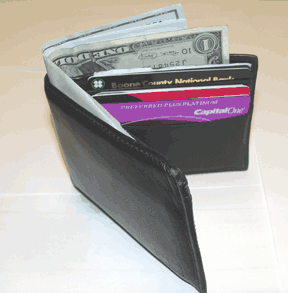Entries Tagged 'freelance copywriting' ↓
December 15th, 2008 — copywriting, copywriting services, copywriting tips, freelance copywriting, news, sales writing, website copywriting
Aunt Aida isn’t, as you would imagine, a sweet old lady living with hundreds of cats who spends all her time baking cakes. In fact, Aida isn’t even a person. But as a freelance copywriter, I can’t live without her. She provides the backbone to all my writing.
AIDA is all about the elements that your writing needs to make a sale. If your copywriting skills are going to be effective you have to learn how to:
- Capture your readers Attention
- Arouse their Interest
- Create a Desire
- Get them to take Action.
That would be far too much information to impart in one article, therefore I shall break down the process and here we shall look at how to go about grabbing your readers Attention.
How does a copywriter grab their readers’ attention?
First things first, if you are writing a sales letter, your attention grabber is an effective headline. If you are writing an email then it is the subject line.
For the purpose of this article I shall be looking at writing a sales letter. Your headline will be at the top of your letter but, to create instant impact, it can also be on your envelope as this will be your first opportunity to grab the attention of your reader.
So what type of headline works best?
- One giving news?
- One promising a benefit?
- One that arouses curiosity?
One that sells or promises benefit will always be a winner, but the most powerful one is the one that is a combination of all three.
If you are stuck for ideas try starting it with ‘How’ or ‘Now’:
‘How this copywriter will increase your sales conversion rate’
‘Now, even better quality, even lower prices’
When is the best time to write it?
I’m not referring to the time of day here. Everyone has their own opinion on this; some say at the start before you write the body of your copy, others say at the end. There is no right or wrong answer so go with whatever feels right to you.
One tip is to come up with several headlines and then pick the best one. You may find that different ideas occur to you at different times in the writing process.
Forget the full stop
Never, never, never end your headline with a full stop.
Why? Well, what does a full stop tell your reader to do? That’s right, stop reading – that is last thing that you want to happen.
How long should it be?
Quite simply, as long as is necessary to get your message across. But be sensible. A headline that goes on forever will be a complete turn-off.
So that about wraps up how to grab your readers’ attention. If you have any other ideas why not post a comment? It would be great to hear someone else’s take on this.
In a few days I’ll post the next article in this series addressing how you can arouse your readers’ interest.
December 12th, 2008 — copywriting services, copywriting tips, freelance copywriting

The Holy Grail of business is the effectiveness of your marketing strategy.
If you have a shop on the high street, you would use your shop window displays to draw the public in. Once they step inside your shop, your highly trained army of sales staff are there to convert their initial interest into sales.
This is also true for online businesses, albeit in a virtual way. Your website needs to draw visitors to browse before they start to buy.
Of course, in the online world your shop window display is effective copywriting. There is one advantage of having a bricks and mortar shop; if sales begin to diminish you can resort to loitering in the shop doorway, leaping on unsuspecting passing trade, dragging them into your shop and forcing them to buy.
That is not to say that I am condoning such strategies but it is not something that is available to the online trader. Copywriters, no matter what their calibre, are unable to drag in clients or herd them through your website using a cattle prod. But their copy will increase the flow of traffic to your site and encourage them to browse and ultimately buy by being persuasive.
Persuasive copywriting is a skill that requires the use for four techniques.
- Evoking an emotional response – emotion is the most powerful tool available to the copywriter as it is the most important factor in the decision making process.
- Persuasion – the hard well will have your customer running for the door. The key is to persuade them to make the decision you want them to make.
- Be familiar with the website – your copywriter will then be able to impart a confident tone in their writing.
- Understanding the products – the copywriter must understand the product thoroughly so they can convey specific instructions and descriptions.
Copywriting is therefore all about attracting and then persuading your customer to buy. Persuasive copywriting is effective copywriting and therefore will be the hallmark of a professional.
December 10th, 2008 — copywriting services, copywriting tips, freelance copywriting

How on earth can a copywriter know how to make someone buy?
It’s not as if we were all fitted at birth with a little button that can be pressed to make us open our wallets. Which is rather a shame because then my job as a freelance copywriter would be so much easier.
Let me start by telling you something that most definitely won’t make people buy – clever marketing. It doesn’t matter how pretty your ad looks, how witty your slogan or ironic the content, none of that will make your reader think ‘I must buy that’.
What will get them to open their wallets is when the marketing strikes a chord with them. It is exactly this that a copywriter must aim for; they must tap into their emotional reasoning.
Customers are canny creatures and they won’t buy just because you are trying to sell to them but they will buy if you can make them realise it would be of benefit to them to own what you are offering.
- It could give them the solutions to their problems
- Make them more attractive to the opposite sex
- Guarantee increased income
Just be careful about what you promise because you have to fulfil their expectations.
The key is to understand your audience, to get inside their heads and discover exactly what makes them tick. It’s not an easy thing to do and takes much practice but once you have mastered it you will be producing copy that will build customer confidence in your products and will make them want to buy.
Sounds simple, doesn’t it?
December 8th, 2008 — copywriting services, copywriting tips, freelance copywriting
The ambition of every freelance copywriter is to write the greatest sales letter ever  written. But when you are sat in front of your laptop carefully crafting your letter, how do you make sure that your message hits the back of the net?
written. But when you are sat in front of your laptop carefully crafting your letter, how do you make sure that your message hits the back of the net?
Well, as already mentioned in my earlier posting The Copywriter Scores, the best place to start is the identification of your goals and objectives. Think about what exactly it is that you want your reader to do; what should their reaction be when they read this letter?
Basically you are looking to identify:
What you want your reader to know
Make sure your writing is benefit-led and not feature-led although you will need to tell your reader some facts about what you are selling so that they can then justify their buying decision.
How you want them to feel
This is their emotional response – you want them to feel worried that they’ll be missing out if they pass up this opportunity. The emotional response is not an easy little blighter to pin down at the best of times but if you can tap into your readers’ emotional tank you will be on to a winner.
What you want them to commit to
This is the call to action. It could be ‘buy now’, ‘recommend a friend’ or perhaps ‘book an appointment with an advisor’. Whatever it is it must be specific and direct. You must leave them in no doubt whatsoever about what they should do, how they should do it and when.
Follow those three golden rules and hit the back of the net every time.
Sally Ormond
December 5th, 2008 — copywriting services, copywriting tips, freelance copywriting

Each new project brings with it many challenges. But one of the most crucial aspects you will ever face as a freelance copywriter is the defining and setting out of your goals.
The starting point for any new piece of work is to ask yourself what the purpose of the document you are about to write is. If you are writing a sales letter it is important to remember that what you are about to create will replace a personal visit or conversation with the reader. Therefore it must achieve what a salesman would achieve face to face.
Your goal would be any number of things including:
- Making a sale
- Getting opt-ins for your email list
- Getting someone to open an account with you
- Increase a customer’s spending with you
- Renewing a contract
- Agreeing to a meeting
Whatever it is you must ensure that it is the goal that drives your writing and not your creativity.
Writers are creative by nature so it can be all too easy to let your alter ego get the better of you. How do you know if you’ve gone over the top? If , when you read it, it makes you smile; you want to show it to everyone with a big grin on your face shouting from the roof tops ‘look how clever I am’, ditch it.
Take a look at it and ask yourself if it will persuade the reader to buy. If your answer is ‘no’, scrap it. You are not in the running for the ‘Most creative sales letter’ Oscar, you are trying to achieve the goal you have been given by your client.









